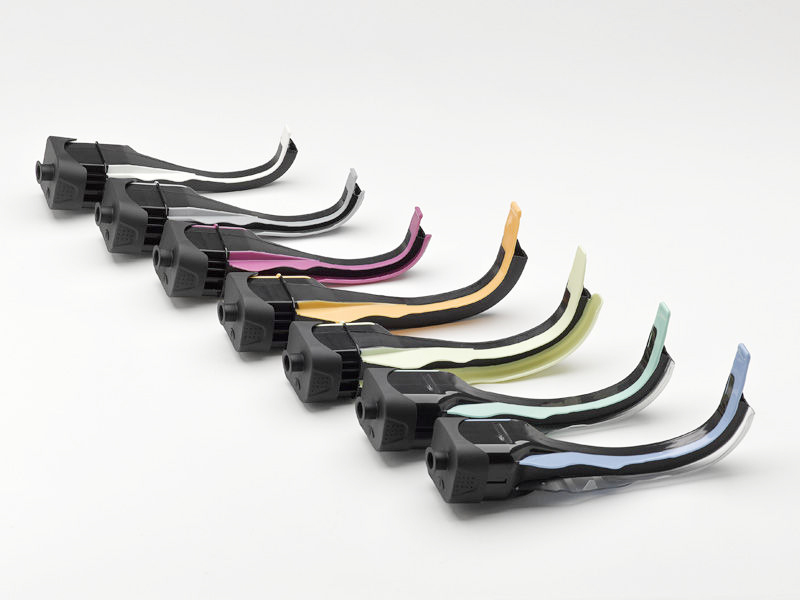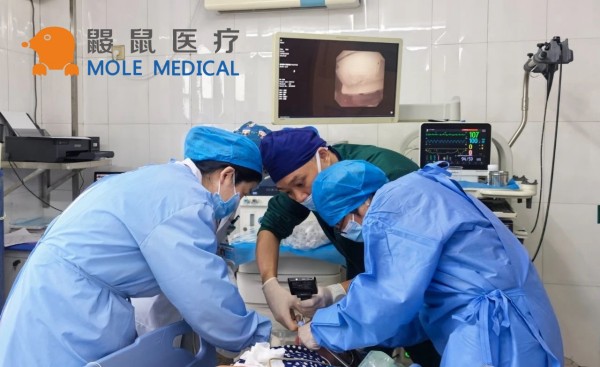The Airtraq Video Laryngoscope: Revolutionizing Intubation
Oct 23, 2024
In emergency medicine and anesthesiology, effective intubation is crucial for ensuring patient safety and optimal outcomes. The Airtraq video laryngoscope, developed by Mercury Medical, is a significant advancement in this field, enhancing visualization and accessibility during intubation procedures. This blog explores the features, benefits, and practical applications of the Airtraq video laryngoscope.

Understanding the Airtraq Video Laryngoscope
The Airtraq video laryngoscope is a portable device designed to provide clinicians with a clear view of the airway, making the intubation process safer and more efficient. Its unique design combines a conventional laryngoscope with a video display, allowing the operator to visualize the vocal cords in real-time. This is especially beneficial in difficult intubation scenarios where traditional methods may fail.
Key Features
- Integrated Video System: The Airtraq features a built-in camera that captures high-definition video of the laryngeal area. The video feed is displayed on a screen, which can be positioned for optimal viewing by the operator and assisting staff.
- Angled Blade Design: The blade is specifically contoured to provide an optimal line of sight to the glottis. This angling reduces the need for excessive head positioning and manipulation, making the procedure easier for both the clinician and the patient.
- Single-Use and Reusable Options: The Airtraq system offers both single-use and reusable blades, catering to different clinical settings. The single-use design minimizes the risk of cross-contamination, while the reusable blades are made of durable materials that withstand sterilization processes.
- Lightweight and Portable: Designed for ease of transport, the Airtraq video laryngoscope is lightweight, making it suitable for use in various settings, from operating rooms to emergency response units.
- User-Friendly Interface: The intuitive controls and layout ensure that even those with minimal experience can quickly learn to operate the device. This is critical in emergency situations where time is of the essence.
Advantages of the Airtraq Video Laryngoscope
- Enhanced Visualization: The primary advantage of the Airtraq is its ability to provide a clear, magnified view of the airway. This significantly improves the chances of successful intubation, especially in patients with challenging anatomical features.
- Reduced Intubation Time: Studies have shown that the use of video laryngoscopes can reduce the time required for intubation, which is crucial in emergency situations where every second counts.
- Increased Success Rate: The Airtraq’s design has been linked to higher first-pass intubation success rates. This reduces the risk of complications associated with multiple intubation attempts, such as trauma to the airway or hypoxia.
- Improved Training Tool: The ability to record and display video in real-time makes the Airtraq an excellent educational tool for training new practitioners. It allows for immediate feedback and analysis of techniques, improving the learning curve for intubation skills.
- Versatility: The Airtraq is effective across a wide range of patient demographics, including pediatric and obese patients, who often present unique challenges during intubation.
Practical Applications in Clinical Settings
The Airtraq video laryngoscope has found its place in various clinical environments, from hospitals to emergency medical services (EMS). Here are some common scenarios where it proves invaluable:
- Emergency Departments: In high-pressure environments like emergency rooms, the Airtraq’s quick setup and ease of use make it ideal for rapid airway management.
- Critical Care: For patients in intensive care, where intubation may be necessary due to respiratory failure, the Airtraq’s enhanced visualization aids in minimizing trauma and complications.
- Out-of-Hospital Settings: Emergency responders can carry the Airtraq in ambulances, ensuring they have a reliable tool for securing airways in the field, especially in challenging conditions.
- Anesthesia: In the operating room, anesthesiologists can utilize the Airtraq for patients with known difficult airways, ensuring a smoother induction process.
Challenges and Considerations
While the Airtraq video laryngoscope offers numerous advantages, it is essential to acknowledge potential challenges:
- Cost: The initial investment for the Airtraq may be higher than traditional laryngoscopes. Healthcare facilities must weigh the benefits against the costs when considering integration into their practices.
- Training and Familiarization: While the Airtraq is user-friendly, staff must still undergo training to maximize its potential. Institutions should consider implementing regular training sessions to keep skills sharp.
- Dependence on Technology: Over-reliance on video laryngoscopes can lead to a decline in traditional intubation skills. It is vital for practitioners to maintain proficiency in both techniques.
Conclusion
The Airtraq video laryngoscope represents a significant leap forward in airway management technology. Its combination of enhanced visualization, ease of use, and versatility makes it a valuable tool in various clinical settings. While there are considerations to keep in mind, the benefits it offers in improving intubation success rates and patient safety are undeniable. As the field of medicine continues to evolve, innovations like the Airtraq will play a crucial role in advancing care and outcomes for patients in need of airway management.
By embracing such technologies, healthcare professionals can not only enhance their skills but also significantly improve the quality of care they provide.
Categories
Latest Articles

Disposable Nephroscopes: Redefining Safety & Efficiency in Urology
Introduction The shift towards minimally invasive urological surgery has found a pivotal ally: the disposable nephroscope. As traditional reusable scopes grapple with persistent biofilm contamination risks and soaring sterilization costs, the global medical community is rapidly adopting single-use solutions. This article analyzes the clinical value, technological evolution, and dynamic innovation landscape driving this transformative shift. ... Read more

Disposable Video Laryngoscope Blades: The Ultimate Solution for Preventing Cross-Contamination
In the operating room, as the cold light of a video laryngoscope illuminates a patient’s airway, an age-old medical challenge is being redefined: How can life-saving instruments avoid becoming vectors of infection? Jiangsu MoleMedical drives an innovative safety revolution—replacing reusable devices with single-use, sterile laryngoscope blades that create a pure barrier for critical airways. Traditional video ... Read more
-2.jpg)
FDA & CE Approved Video Laryngoscope: What Makes It Stand Out?
Introduction In high-pressure emergencies and precision-driven operating rooms, video laryngoscopy is revolutionizing airway management. Mole Medical’s FDA and CE-certified technology replaces tactile-dependent “blind intubation” with real-time visual navigation – enhancing safety, accuracy, and clinical outcomes worldwide. Why Certification Matters Mole Medical’s dual certifications validate its global compliance and performance: FDA Clearance: Rigorous validation of safety/efficacy ... Read more

Mole Medical Showcases Advanced Endoscopy Solutions at CMEF Autumn 2025, Driving Global Partnerships
Guangzhou, China – September 26-29, 2025 – The 92nd China International Medical Equipment Fair (CMEF Autumn) concluded successfully on September 29th at the Canton Fair Complex in Guangzhou. Mole Medical Technology Co., Ltd. (Mole Medical) made a significant impact at the event, drawing global medical professionals and partners to its booth (Hall 2.1, Stand Q24) ... Read more

How to Use Disposable Ureteroscopes Safely and Efficiently
In the field of urology, the application of disposable electronic ureteral-kidney pelvis endoscopy catheters is leading the technological innovation in minimally invasive surgeries. According to the 2024 multi-center research data from China’s urology department, among the over 5,000 surgeries included, the patient group using disposable catheters performed significantly better in key indicators such as operation ... Read more



